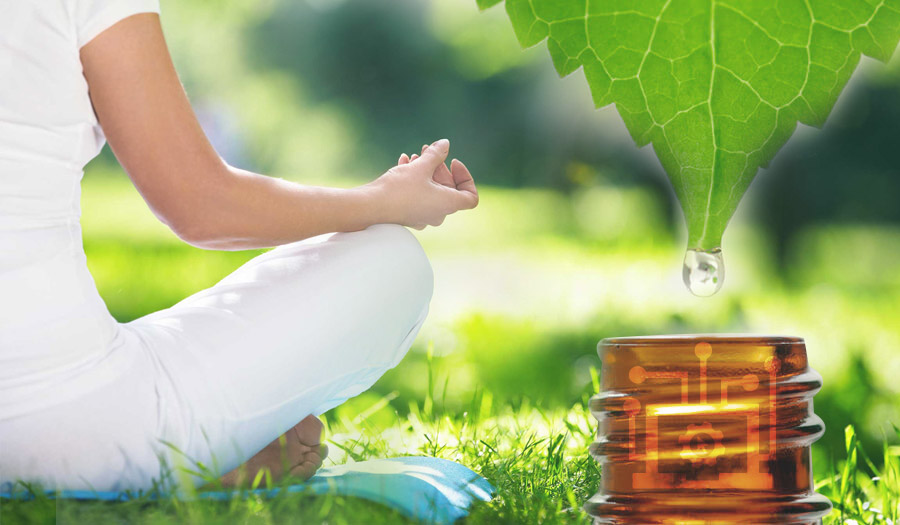Dr Poonam Khetrapal Singh, WHO Regional Director for South-East Asia said that yoga has helped hundreds of millions of people from various countries and cultures during the COVID-19 pandemic in staying healthy as well as highlighted that yoga is for all of humanity. On the eve of International Day of Yoga (IDY), WHO and its Member States in the South-East Asia Region lead global efforts to celebrate the physical and mental health benefits of yoga and its contributions to lifelong health and well-being.
“Throughout the COVID-19 response, yoga has helped hundreds of millions of people from all countries and cultures stay healthy and well, highlighting that yoga is for all of humanity – the theme of this year’s IDY event,” she said.
In line with the Region’s push to reorient health systems toward strong primary health care (PHC), she suggested that policymakers consider incorporating yoga into community-based mental health and well-being initiatives, as well as increasing efforts to leverage the power and potential of safe and effective traditional medicine.
Regular Yoga practice for all
Regular yoga practise may assist individuals of all ages and economic levels attain appropriate physical activity, making it a high-impact, low-cost strategy to prevent and treat noncommunicable diseases (NCDs), which is one of the Region’s eight major goals, she noted.
It has been demonstrated to have immediate psychological impacts, reducing anxiety and tension while enhancing feelings of emotional and social well-being, according to the WHO Regional Director ahead of International Yoga Day on June 21.
She went on to say that the Region is stepping up efforts to increase physical activity and improve mental health in accordance with its Flagship Priorities, the WHO Global Action Plan on Physical Activity (GAPPA) 2018-2030, the WHO Comprehensive Mental Health Action Plan 2013-2030, and the Sustainable Development Goals.
Last year, WHO released a Regional Roadmap for GAPPA Implementation, which will assist Member States in identifying and implementing policies to target a 15% relative decrease in the incidence of inadequate physical activity by 2030.
Health and education ministers from around the area issued a “Call to Action” to increase the implementation of comprehensive health programmes in schools, particularly by promoting physical exercise.
In the midst of the continuing COVID-19 reaction and recovery, governments should consider incorporating yoga into preventative and promotion health initiatives, particularly for mental health – a top priority in the next months and years,” she said.
Also Read: Top 5 Yoga asanas that are simple to do at work
Traditional medicine is living in fascinating times (TRM). The World Health Organization (WHO) and the Government of India inked an agreement in March to create the WHO Global Centre for Traditional Medicine (GCTM) in Jamnagar, India. The GCTM, which is funded by the Government of India with USD 250 million, has a strategic focus on evidence and learning, data and analytics, sustainability and equity, and innovation and technology, with the overall goal of optimising TRM’s contribution to global health and sustainable development.
The GCTM’s objective is closely matched with the Region’s ongoing focus on improving TRM system performance monitoring, boosting TRM product safety monitoring, increasing TRM research capacity, and integrating safe and effective TRM into health care delivery, particularly at the PHC level.
Yoga is not only widely available but also popular, as evidenced by the 177 votes cast at the UN General Assembly in 2014 to make the International Day of Yoga an annual, globally recognised celebration, as well as the inclusion of yoga in physical activities at WHO Governing Body meetings in the Region and, more recently, globally, including at the World Health Assembly.
In the Region’s ongoing efforts to prevent and manage NCDs, WHO will continue to emphasise the physical and mental health advantages of yoga, as well as other kinds of traditional knowledge, skills, and practise for the prevention, diagnosis, and treatment of physical and mental disease. On International Yoga Day, WHO reaffirms its commitment to assisting all nations in the Region in harnessing the power and potential of yoga for a healthier, happier, and stress-free future for everyone.
Follow Medically Speaking on Instagram





